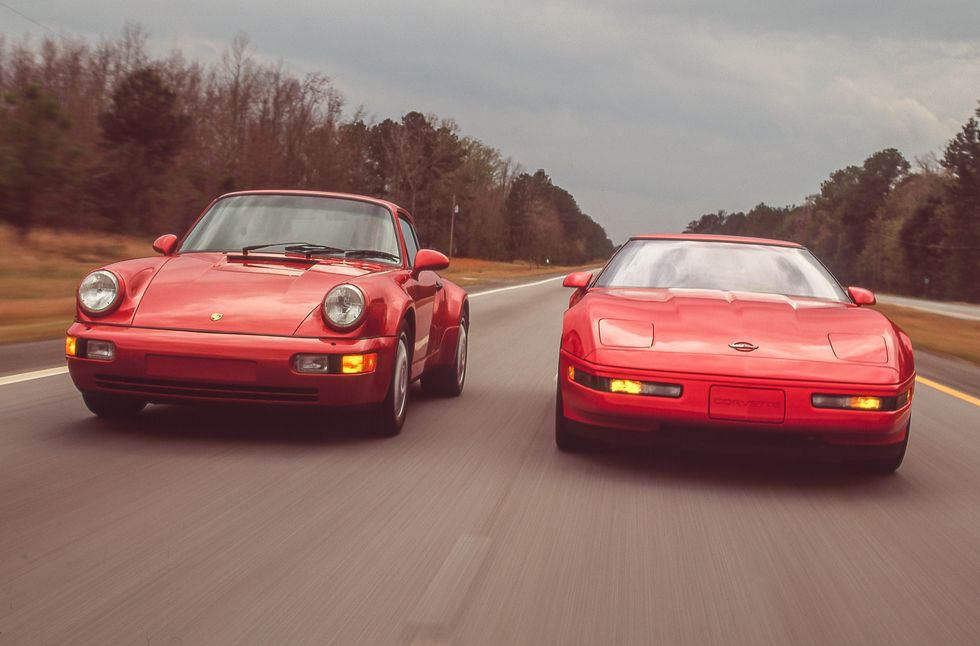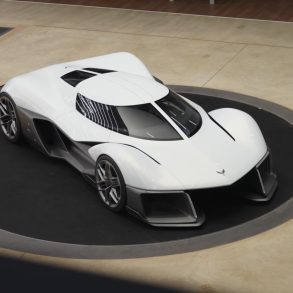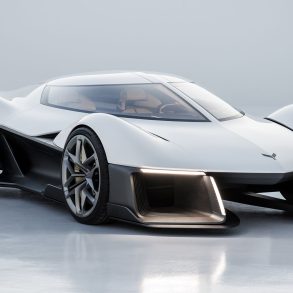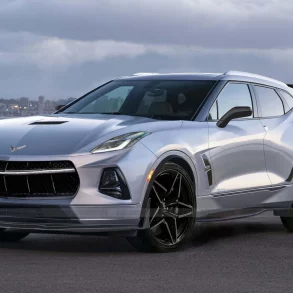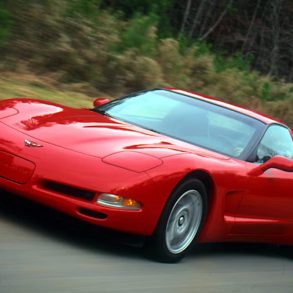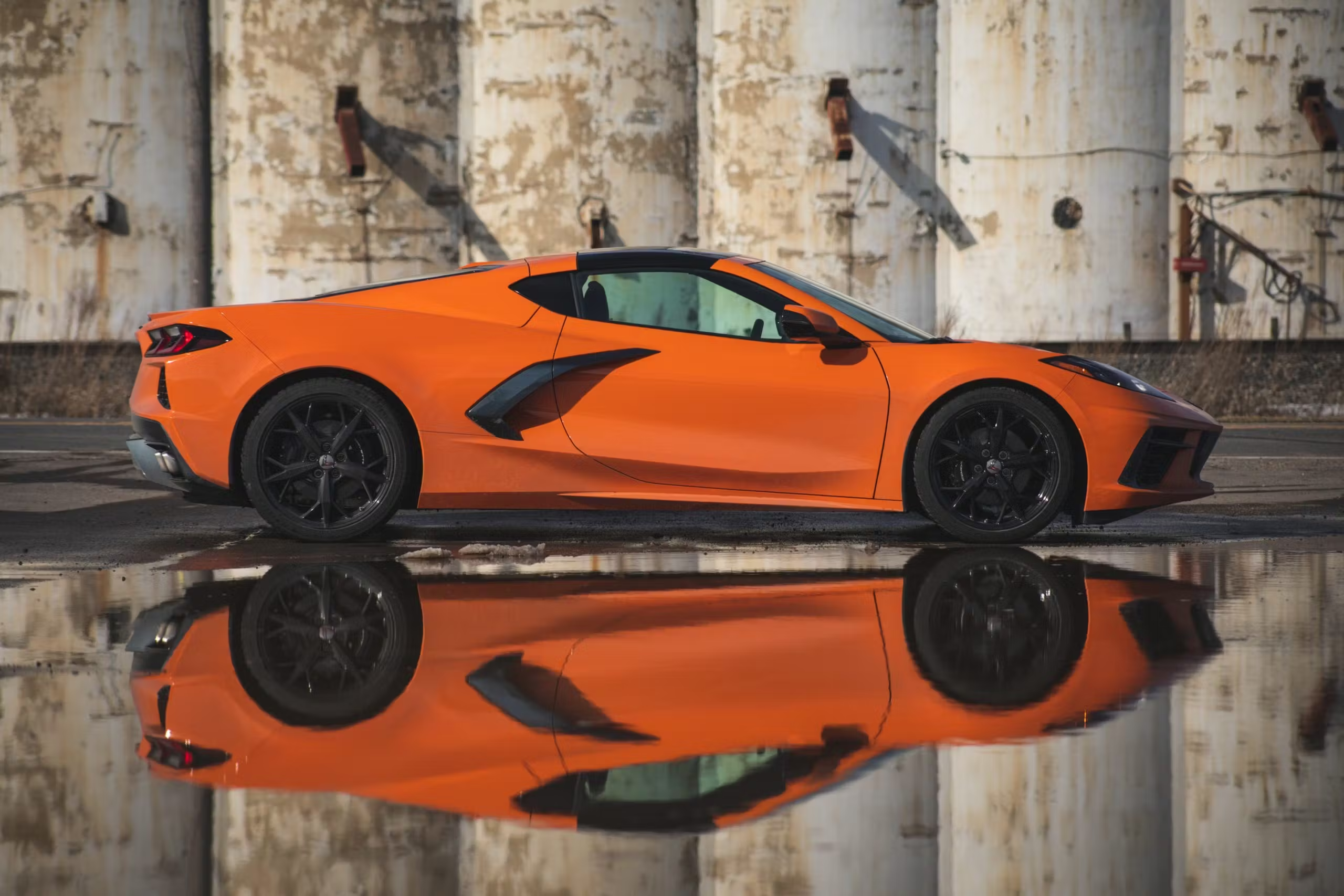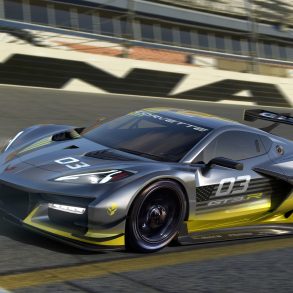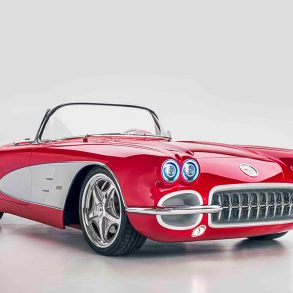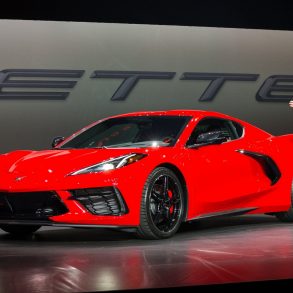While it is not commonly known, the origins of “CORVSPORT.COM” date back to about 2010 when two (somewhat younger) automotive enthusiasts had an idea to build an automotive website that showcased the decades long rivalry between the Corvette and the Porsche 911. The name “CORVSPORT” was originally developed as an abbreviation of the phrase “CORvette VS PORsche” (with a T thrown on the end to give the name some additional character.) Unfortunately, Porsche wanted nothing to do with the project and threatened legal action against our fledgling company if we didn’t eliminate the Porsche factor from our website, and so the name was repurposed to “CORVette motorSPORTs.”
However, the Corvette / Porsche rivalry has always been part of the heart and soul of this website. It fueled its creation and its evolution, even if much of the content surrounding Porsche was muted due to the threat of a lawsuit. As time has passed, and the internet has matured, those concerns have largely abated,….and it is for that reason that I (as the founder on the Corvette side of Corvsport.com) thought it would be fun to turn back the clocks a few years and look at one of the great rivalries from days gone by….and so, without further ado, I give you the 1991 Corvette ZR-1 versus the Porsche 911 Turbo rivalry!
The content of this story, much of which originated in the April 1991 issue of Car and Driver magazine, is the kind of storytelling that has helped fuel this rivalry for generations.
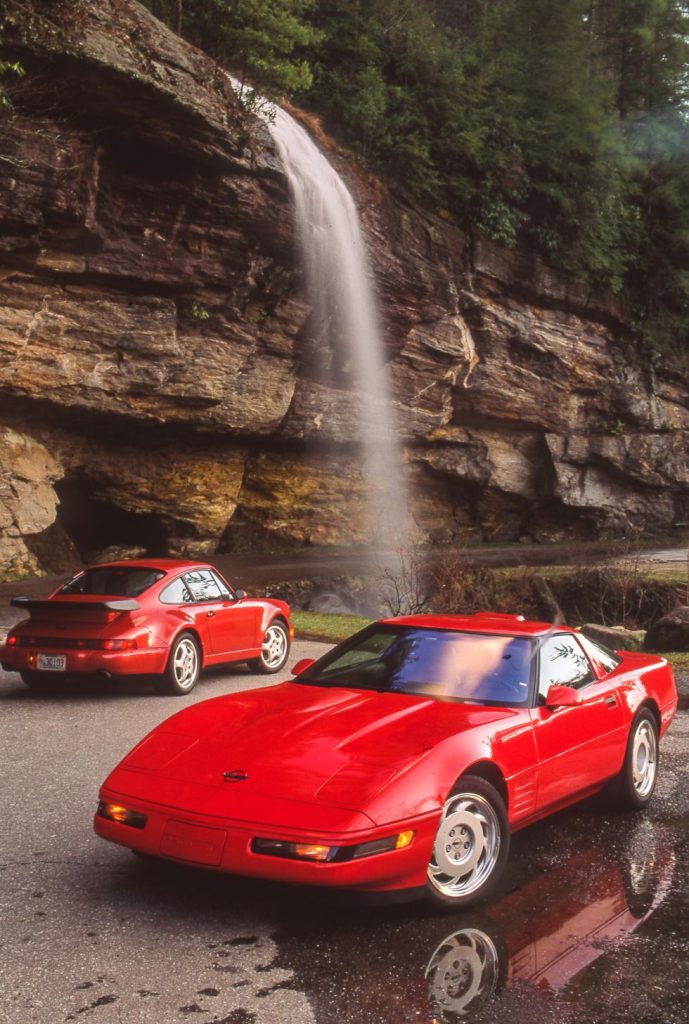
The rivalry between Porsche and Corvette actually started in 1965 which, by no coincidence, is also the year that the Porsche 911 came on the scene. As both Chevrolet and Porsche recognized that building a track-capable sports car would win the imaginations of consumers, each set about developing a machine that could dominate at the track. The old adage “win on Sunday, sell on Monday” came roaring to the forefront, even if both manufacturers were “officially” banned from producing factory-built race cars at that time.
The German manufacturer, who had grown to prominence thanks to the commercial success of their 356 series, saw an opportunity to build a classically proportioned, mid-engine coupe’ powered by an air-cooled, horizontally-opposed, six-cylinder engine that they could wedge into the stubby rearend of their 2+2 seater sports car. The 911, which borrowed (at least loosely) from both its 356 and Volkswagen counterparts, continued a tradition that had started when the original Volkswagen was introduced by Ferdinand Porsche in the late 1930s.
The Americans, on the otherhand, went with the age-old adage – MORE IS BETTER. Henry Ford had proved it. Zora Arkus-Duntov had proved it even more…especially after the original 1953-1955 Corvette struggled to sell as a result of being badly underpowered by an inline-six “Blue Flame” engine. It was only after Duntov, along with engineer Ed Cole, decided to shoehorn a small block V8 under the Corvette’s fiberglass bonnet that the Corvette started to gain a stigma as an actual sports car. When Bill Mitchell and Larry Shinoda came on the scene a few years later with the second-generation Sting Ray, Duntov saw an opportunity to move beyond production sports car and created the short-lived Grand Sport Corvette…and while he got his hand slapped by GM for doing so, he put into motion the idea that the Corvette could be more than a weekend warrior at the racetrack. Had it not been for the AMA (American Manufacturers Association) on factory backed race programs, the Grand Sport Corvette may well have ruled the day…but even as it was, it sent a message around the world that Corvette was here to play.
Regardless your allegiance – Porsche 911 or Corvette – there is no denying that both cars have had an enormously successful and prolific run in the world of sports car enthusiasts. However, when it comes to the question of superiority, there have been contenders in both camps who have challenged the other in terms of speed, handling, braking, overall driving experience, aesthetic, etc. The argument around better engines, better suspension, more power, more efficient aerodynamics has led to more than a few heated debates between Porsche and Corvette enthusiasts alike…but arguably one of the best rivalries of its time was the introduction of the 1991 Corvette ZR-1 and the Porsche 911.
By twenty-first century standards, both cars are dated…throwbacks to an era of success where “whale tail” spoilers and Lotus-built engines ruled the day. Even so, there is no denying that both these cars changed consumer opinion (mostly for the better we think) about both these phenomenal machines.
The Corvette ZR-1
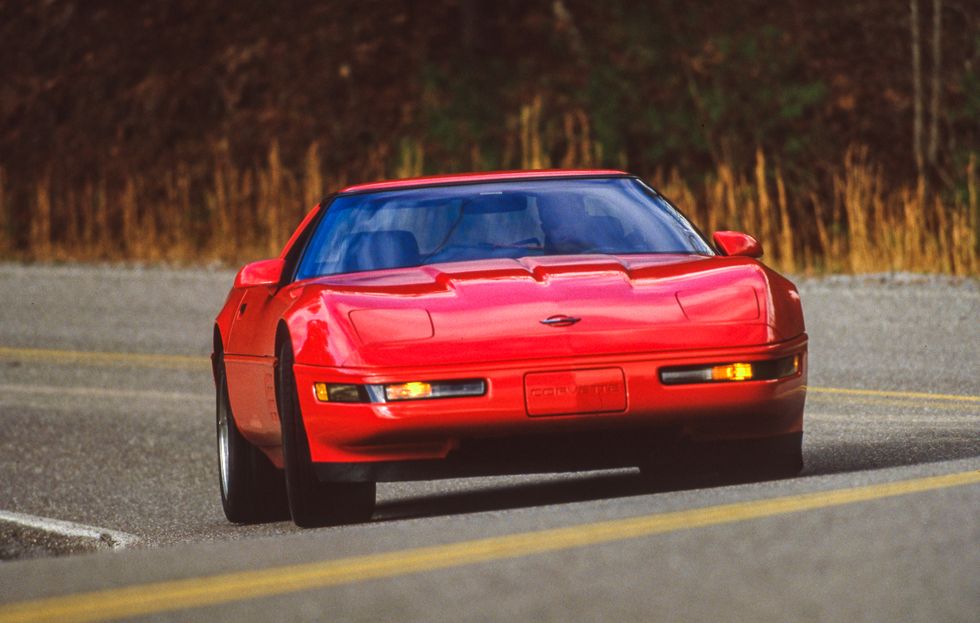
This is, afterall, a Corvette enthusiasts’ site, so I felt it fitting that we begin with the American side of this prolific rivalry. When it was introduced in the early nineties, the fourth-generation Corvette ZR-1 proved that Chevrolet had what it took to build a true supercar, even if that car lacked the subtle refinements of its European counterparts. The car, for any shortcomings it had in terms of comfort or styling, was a beast, delivering incredible speed and race-car quality handling. The car boasted a top speed of 171 mph, a 0-60 time of just 4.9 seconds (great for its time), a quarter mile time of 13.2 seconds at 108 miles per hour, and a 70-0 mph braking distance of just 155 feet. Consider this, you got that level of performance in 1991 for $64,138 (which would equal $155,242.75 in 2024 dollars – making it more expensive than the latest Z06). While that was a lot of “bank’, even by today’s standards, it was still just over half of the 1991 Porsche 911 Turbo which, for all its added refinement, was a second-place contender when it came to measuring the same specs.
The Porche 911 Turbo
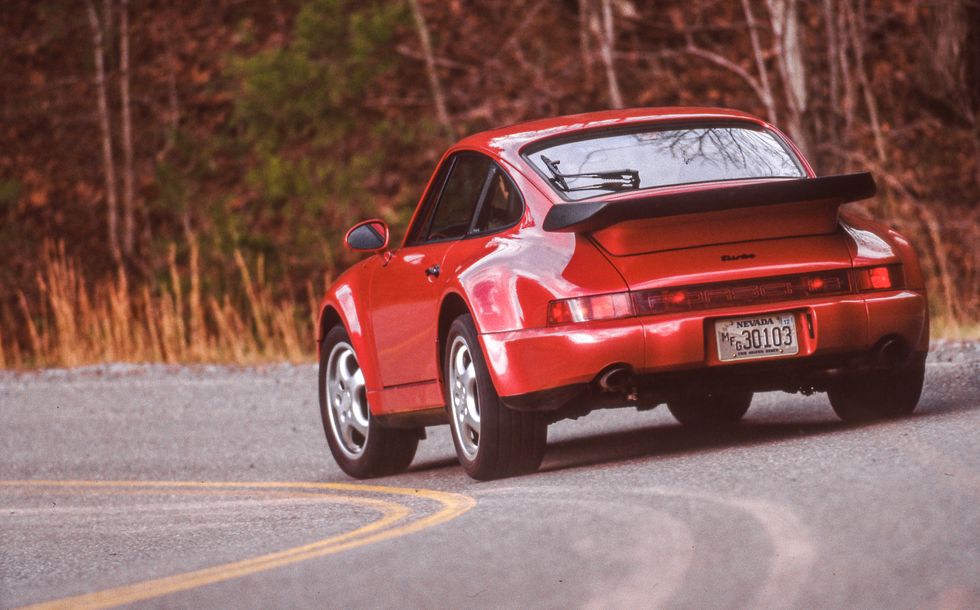
If arroagant appeal was the deciding factor, the 1991 Porsche 911 would undoubtedly take the prize. That’s not to criticize the flagship marque of Germany. Porsche’s 911 coupe looks flawless and fast, with its robust bodywork and massive rear wing. The car is also well engineered, just as you would expect in a German vehicle. Everything about the car looks exotic, and expensive which, at $105,191 ($239,673 in 2024 dollars), it is….but keep in mind that the price also included the (then) new federal luxury tax and the gas-guzzler tax.
But its at the heart of the car that we focus our attention. Beneath the rear bonnet is a 3.3-liter engine featuring a single-turbo. And its here that the car loses some of its points in terms of all out power. At idle and low speeds, the 3.3-liter engine gets virtually no assistanace from the turbo, meaning the engine is sluggish, even a little sleepy in terms of performance. However, as the car approached 3,000 rpms, the 911 Turbo comes to life and runs like a private school college student who has consumed too much caffeine. The car pulls from 0-60 miles per hour in just 4.4 seconds and races through a quarter mile in 12.9 seconds at 108 miles per hour. What’s more, the car can corner well, even when you are pushing the car towards its limits, at least until about 85% of its total potential. Once you exceed that threshold, and the car starts to behave erratically, “pitching and twitching” like it prefers the runoff on the sides of the road to the road itself. In fact, its this drivability factor that caused the original reviewers of these two cars to put the 911 in second place.
Here’s why:
Winners and Losers
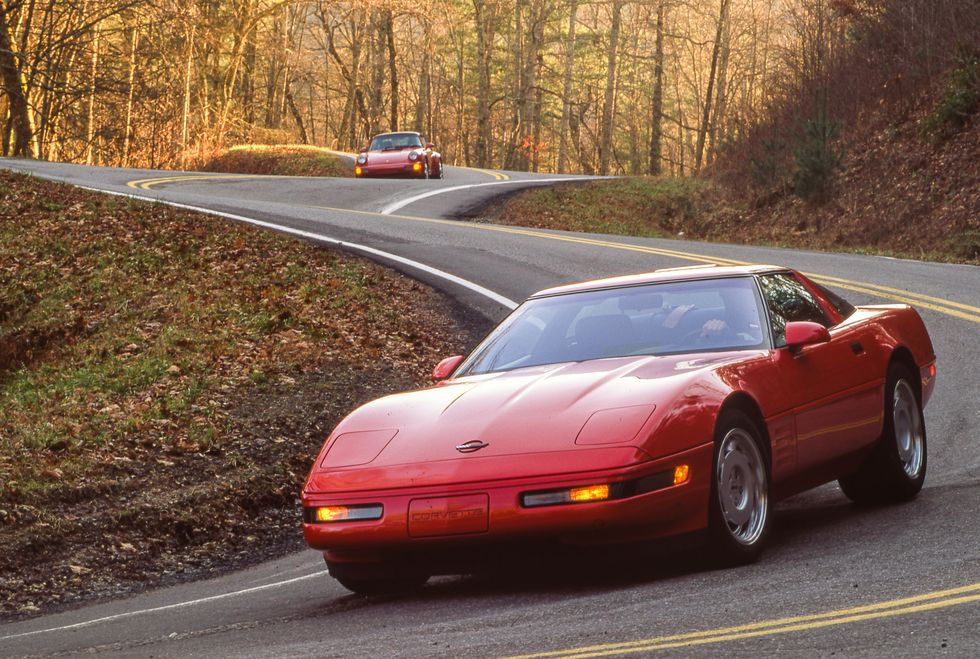
The ZR-1 defeated the Porsche 911 Turbo for one reason: it simply goes faster better. As Rich Ceppos, the author of the original comparison article from Car & Driver stated, “(the) ZR-1 in full stride is a highly talented athlete. It’s always on its toes. Its moves are intuitive. Its speed is sudden and explosive. If you lust after a ZR-1 for any other reason than the thrill it delivers when you hammer it, perhaps you will be disappointed.”
“Unlike the Porsche, the Vette is not a car for preening. For one thing, there’s nothing about it that’s exclusive—at least not visibly. This year, every Corvette shares the ZR-1’s concave tail, and all Vettes wear the same new nosepiece. Only a small ZR-1 badge and few subtle body parts set it off. We’re convinced that our ZR-1 got all the attention it did because it was always in the company of the strutting Porsche.”
“The Vette’s behavior on twisting two-lane roads is every bit as exciting as what it does in a straight line. It goes where you aim it. Period. No feints, lurches, or false moves. It hangs on as if it had giant asphalt-piercing spikes in its tires. The Corvette ZR-1 is the equivalent Isiah Thomas: both do the seemingly impossible moves and somehow make it look easy.”
“Ease off to catch your breath and it’s apparent that the Vette is a thoroughly docile creature around town. The controls are light and precise, and every amenity except heated seats is on duty to serve you. You could commute to work in this car.”
| 1991 Chevrolet Corvette ZR-1 | 1991 Porsche 911 Turbo | |
| VEHICLE TYPE | VEHICLE TYPE | |
| front-engine, rear-wheel-drive, 2-passenger, 2-door targa | rear-engine, rear-wheel-drive, 2+2-passenger, 2-door coupe | |
| PRICE AS TESTED | PRICE AS TESTED | |
| $68,135 (base price: $64,138) | $105,191 (base price: $95,000) | |
| ENGINE TYPE | ENGINE TYPE | |
| DOHC 32-valve V-8, aluminum block and heads, port fuel injection | turbocharged and intercooled SOHC 12-valve flat-6, aluminum block and heads, port fuel injection | |
| Displacement | Displacement | |
| 350 in3, 5727 cm3 | 201 in3, 3299 cm3 | |
| Power | Power | |
| 375 hp @ 5800 rpm | 315 hp @ 5750 rpm | |
| Torque | Torque | |
| 370 lb-ft @ 4800 rpm | 332 lb-ft @ 4500 rpm | |
| TRANSMISSION | TRANSMISSION | |
| 6-speed manual | 5-speed manual | |
| CHASSIS | CHASSIS | |
| Suspension (F/R): control arms/multilink | Suspension (F/R): struts/semi-trailing arm | |
| Brakes (F/R): vented disc/vented disc | Brakes (F/R): vented disc/vented disc | |
| Tires: Goodyear Eagle ZR40, F: P275/40ZR-17 R: P315/35ZR-17 | Tires: Bridgestone Expedia S-01, F: 205/50ZR-17 R: 255/40ZR-17 | |
| DIMENSIONS | DIMENSIONS | |
| Wheelbase: 96.2 in | Wheelbase: 89.5 in | |
| Length: 178.5 in | Length: 168.3 in | |
| Width: 73.2 in | Width: 69.9 in | |
| Height: 46.7 in | Height: 51.6 in | |
| Curb weight: 3519 lb | Curb weight: 3270 lb | |
| C/D TEST RESULTS | C/D TEST RESULTS | |
| 30 mph: 2.1 sec | 30 mph: 1.7 sec | |
| 60 mph: 4.9 sec | 60 mph: 4.4 sec | |
| 100 mph: 11.2 sec | 100 mph: 10.7 sec | |
| 130 mph: 20.0 sec | 130 mph: 20.0 sec | |
| 150 mph: 35.5 sec | 150 mph: 38.4 sec | |
| Rolling start, 5–60 mph: 5.3 sec | Rolling start, 5–60 mph: 5.7 sec | |
| Top gear, 30–50 mph: 13.1 sec | Top gear, 30–50 mph: 12.0 sec | |
| Top gear, 50–70 mph: 13.2 sec | Top gear, 50–70 mph: 10.0 sec | |
| 1/4 mile: 13.2 sec @ 108 mph | 1/4 mile: 12.9 sec @ 108 mph | |
| Top speed: 171 mph | Top speed: 166 mph | |
| Braking, 70–0 mph: 155 ft | Braking, 70–0 mph: 167 ft | |
| Roadholding, 300-ft-dia skidpad: 0.87 g | Roadholding, 300-ft-dia skidpad: 0.91 g | |
| C/D FUEL ECONOMY | C/D FUEL ECONOMY | |
| Observed: 17 mpg | Observed: 16 mpg | |
| EPA FUEL ECONOMY | EPA FUEL ECONOMY | |
| Combined/city/highway: 19/16/25 mpg | Combined/city/highway: 16/13/21 mpg | |


